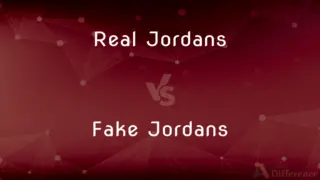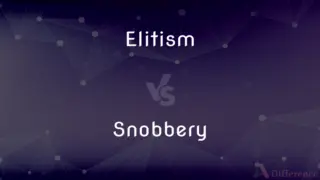Cloning Vector vs. Expression Vector — What's the Difference?
By Tayyaba Rehman — Published on November 30, 2023
Cloning Vector is used to replicate foreign DNA; Expression Vector enables the expression of foreign genes within a host organism.

Difference Between Cloning Vector and Expression Vector
Table of Contents
ADVERTISEMENT
Key Differences
Within the arena of genetic engineering, Cloning Vector and Expression Vector represent vital tools, each with unique functionalities and applications. Cloning Vectors are fundamentally utilized to replicate and amplify a piece of foreign DNA within a host organism. Contrarily, an Expression Vector is designed not only to amplify a gene but also to achieve its expression within a host, producing the requisite protein.
Cloning Vector, by its definition, involves the encapsulation of foreign DNA to facilitate its duplication. The DNA inserted into the Cloning Vector is propagated within the host organism without necessarily translating it into a protein. Conversely, an Expression Vector is employed to ensure that the foreign gene is both propagated and expressed, leading to the synthesis of the respective protein within the host organism.
The intrinsic design of a Cloning Vector primarily focuses on ensuring the stable maintenance and replication of the inserted DNA within the host organism. In stark contrast, the Expression Vector is crafted with specialized elements like promoters, which are critical to initiating the transcription and thus, ensuring the subsequent translation of the inserted gene into a protein.
In terms of application, the Cloning Vector finds its prominence in creating gene libraries and performing gene cloning without focusing on protein synthesis. Conversely, an Expression Vector paves the way for protein expression studies and recombinant protein production because it encompasses the requisite regulatory sequences to facilitate gene expression.
Usage of the Cloning Vector is crucial when the aim is to generate multiple copies of a gene, especially for further analysis or manipulation. The Expression Vector, on the other hand, becomes a requisite tool when the goal transcends mere amplification, aiming towards producing the protein encoded by the gene within the host organism.
ADVERTISEMENT
Comparison Chart
Primary Purpose
Replication of inserted DNA
Expression of inserted gene
Gene Expression
Does not facilitate gene expression
Facilitates gene expression
Regulatory Elements
Lacks regulatory elements for expression
Contains regulatory elements for expression
Application Focus
Used for gene cloning and creating gene libraries
Used for protein production and expression studies
Transcription
Not aimed at facilitating transcription
Aims at facilitating transcription and translation
Compare with Definitions
Cloning Vector
Cloning Vector does not facilitate protein synthesis.
The Cloning Vector propagated the gene without producing the corresponding protein.
Expression Vector
Expression Vector is employed in recombinant protein production.
The Expression Vector enabled the production of the vaccine antigen in cells.
Cloning Vector
Cloning Vector contains an origin of replication.
The origin of replication in the Cloning Vector ensures it is replicated within the bacteria.
Expression Vector
Expression Vector contains regulatory sequences for gene expression.
The promoter in the Expression Vector initiates transcription of the gene.
Cloning Vector
Cloning Vector allows the generation of gene libraries.
By utilizing a Cloning Vector, researchers can build a genomic library.
Expression Vector
Expression Vector aims to produce a specific protein.
Utilizing an Expression Vector, the team expressed a human gene in yeast.
Cloning Vector
Cloning Vector can harbor selectable markers.
Antibiotic resistance genes in Cloning Vectors help identify transformed cells.
Expression Vector
Expression Vector assists in studying gene expression mechanisms.
Scientists utilized an Expression Vector to investigate the gene's impact on cell function.
Cloning Vector
Cloning Vector amplifies foreign DNA within a host.
Scientists use a Cloning Vector to generate multiple copies of a desired gene.
Expression Vector
Expression Vector ensures transcription and translation of a gene.
The Expression Vector was used to produce insulin in bacterial cells.
Common Curiosities
What is the core function of a Cloning Vector?
Cloning Vector is employed to replicate and amplify a specific DNA segment.
What is the role of selectable markers in a Cloning Vector?
Selectable markers, like antibiotic resistance genes, help identify cells that have been successfully transformed with the Cloning Vector.
Why might researchers choose an Expression Vector over a Cloning Vector?
They might choose an Expression Vector when the goal is to express a particular gene and produce its corresponding protein.
Can Cloning Vector be used for protein expression?
Typically, no – Cloning Vectors lack the necessary elements for gene expression.
Can a Cloning Vector be converted into an Expression Vector?
Yes, by adding necessary regulatory elements like promoters, a Cloning Vector can be modified for gene expression.
What organisms are typically used as hosts for Cloning Vectors?
Common hosts for Cloning Vectors include E. coli, yeast, and other easily transformable organisms.
How does an Expression Vector facilitate protein production?
It contains regulatory sequences ensuring the transcription and translation of the inserted gene.
Is it necessary for an Expression Vector to contain a promoter?
Yes, a promoter is essential in an Expression Vector to initiate gene transcription.
What is a crucial component for DNA replication in a Cloning Vector?
An origin of replication is crucial to enable the Cloning Vector to replicate within the host.
Can Cloning Vectors assist in constructing genomic libraries?
Yes, Cloning Vectors are often used to construct genomic libraries by harboring fragments of genomic DNA.
Is it essential for an Expression Vector to contain a terminator sequence?
Yes, a terminator sequence is crucial to signify the end of transcription in an Expression Vector.
Can an Expression Vector be utilized in different host organisms?
Yes, but the regulatory elements must be compatible with the host organism’s cellular machinery.
How does an Expression Vector impact recombinant protein yield?
Expression Vectors are engineered to optimize the transcription, translation, and hence, the yield of recombinant proteins.
Is the origin of replication in Cloning Vectors species-specific?
Yes, the origin of replication should be compatible with the host organism to facilitate vector replication.
What applications are Expression Vectors primarily used for?
Expression Vectors are typically used in recombinant protein production and gene expression studies.
Share Your Discovery

Previous Comparison
Real Jordans vs. Fake Jordans
Next Comparison
Elitism vs. SnobberyAuthor Spotlight
Written by
Tayyaba RehmanTayyaba Rehman is a distinguished writer, currently serving as a primary contributor to askdifference.com. As a researcher in semantics and etymology, Tayyaba's passion for the complexity of languages and their distinctions has found a perfect home on the platform. Tayyaba delves into the intricacies of language, distinguishing between commonly confused words and phrases, thereby providing clarity for readers worldwide.












































